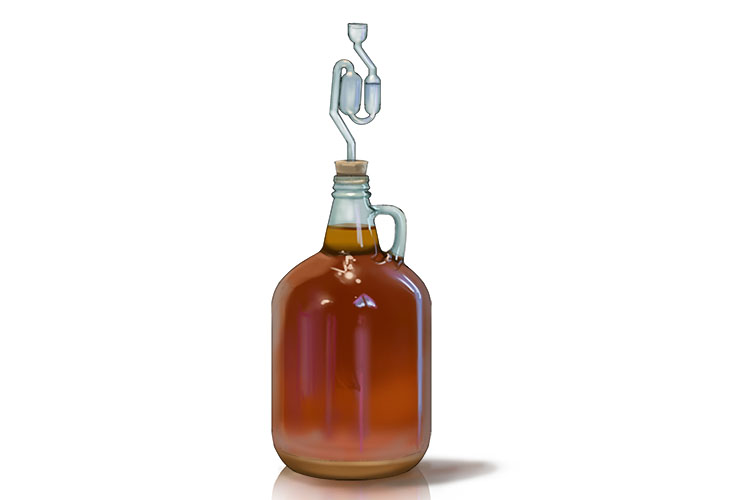Fungi and Yeast Respiration
Respiration uses glucose to create energy (ATP).
Fungi and yeast (microscopic fungi) converts glucose into energy (ATP) for growth and continued survival in their cells.
Aerobic respiration (with oxygen) - The formula is:
Glucose + oxygen → carbon dioxide + energy (ATP) + water
Anaerobic respiration (in the absence of oxygen) - The formula is:
Glucose → carbon dioxide + energy (ATP) + ethanol
Humans use anaerobic respiration to make bread and alcohol.
In yeast cells, anaerobic respiration is called fermentation.
In many fungi anaerobic respiration occurs where there is an absence of oxygen as in waterlogged soil. All the fungi cells must have energy (ATP) at all times otherwise they will die. The fungi must be able to convert glucose at all times.
To remember that aerobic respiration is with oxygen and anaerobic respiration is without oxygen use the following mnemonics:
Imagine an heir to the throne wearing robes being taken quickly (aerobic) through his fields on an ox (with oxygen).

The anaconda wrapped itself in rows. It would be a quick (anaerobic) death for the ox without oxygen.

Fermentation (anaerobic respiration in yeast)
Fermentation is used to make bread.
Glucose → carbon dioxide + energy (ATP) + ethanol (alcohol)
Because only tiny amounts of energy (ATP) is created this is often shortened to:
Glucose → carbon dioxide + ethanol (alcohol)
Fermentation is used to make bread. The carbon dioxide released in respiration of yeast is used by bakers to make bread rise. The ethanol is evaporated away.

Make alcoholic drinks (anaerobic respiration in yeast)
Fermentation is used to make alcoholic drinks.
Glucose → carbon dioxide + energy (ATP) + ethanol (alcohol)
Because only tiny amounts of energy (ATP) is created this is often shortened to:
Glucose → carbon dioxide + ethanol (alcohol)
The ethanol released in anaerobic respiration from yeast is used to provide the ethanol in alcohol content drinks such as beer and wine.





